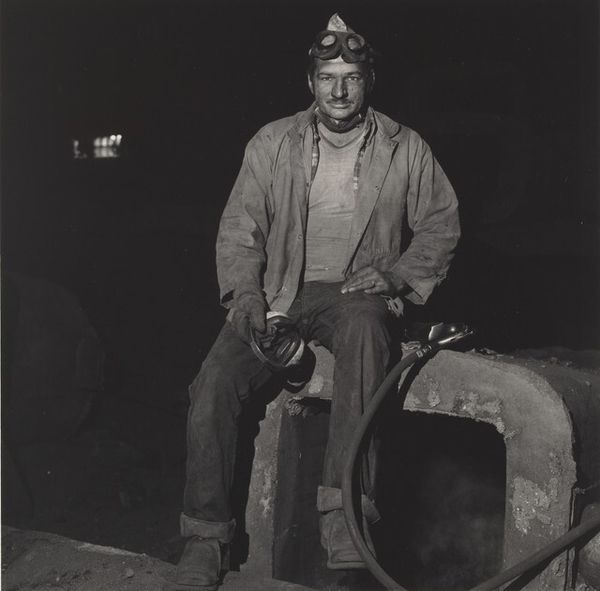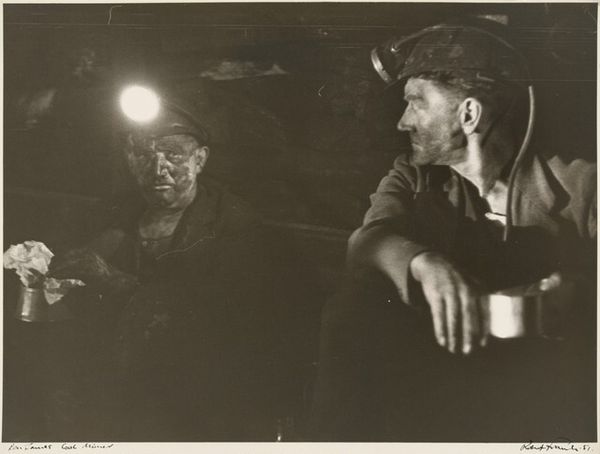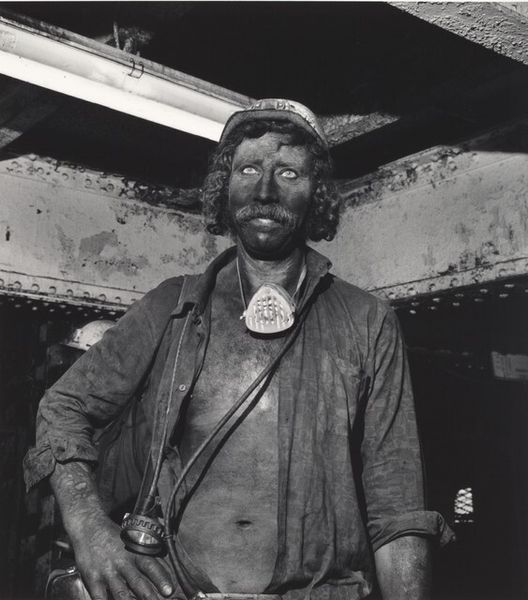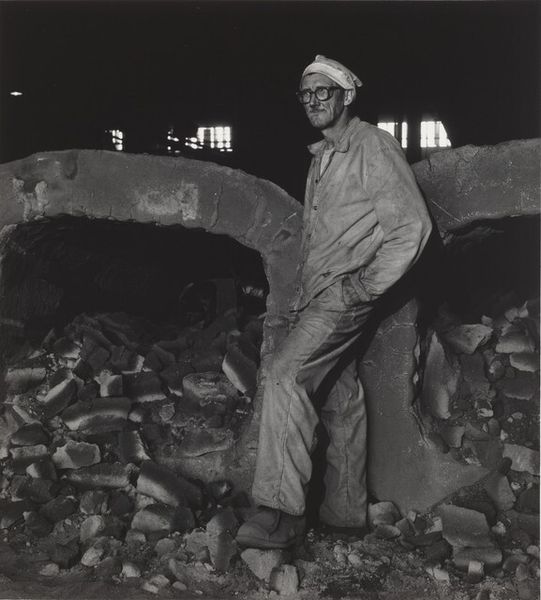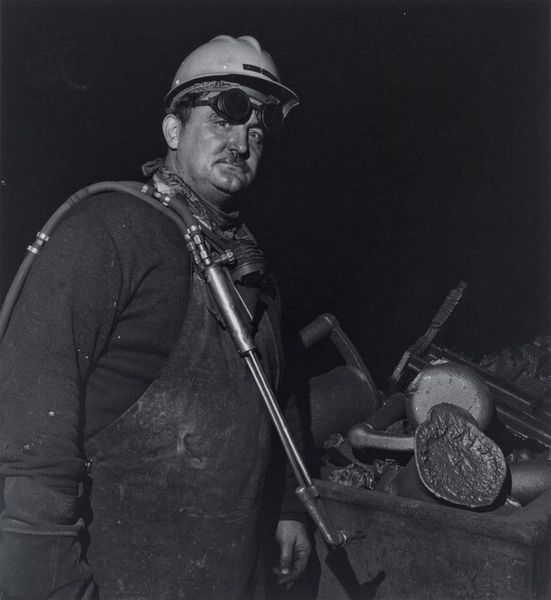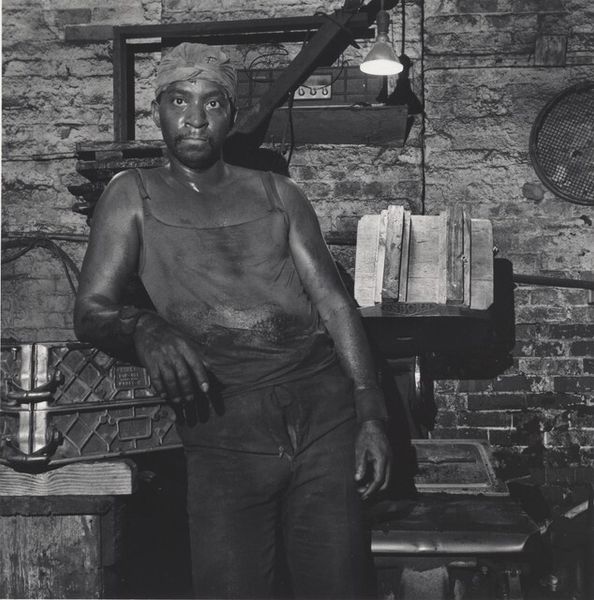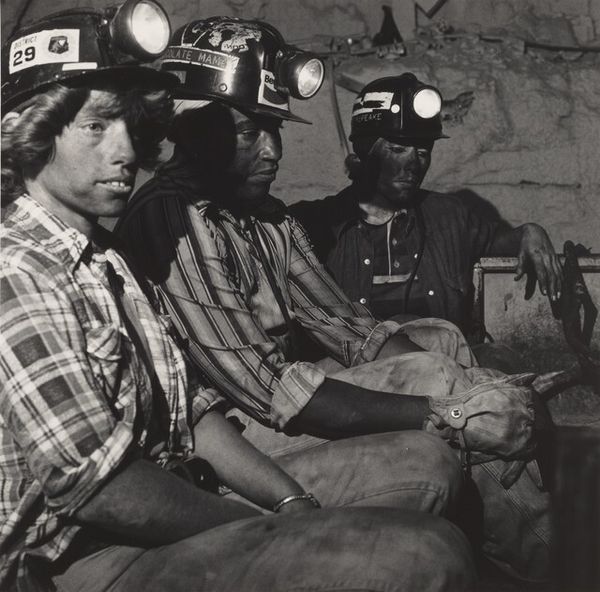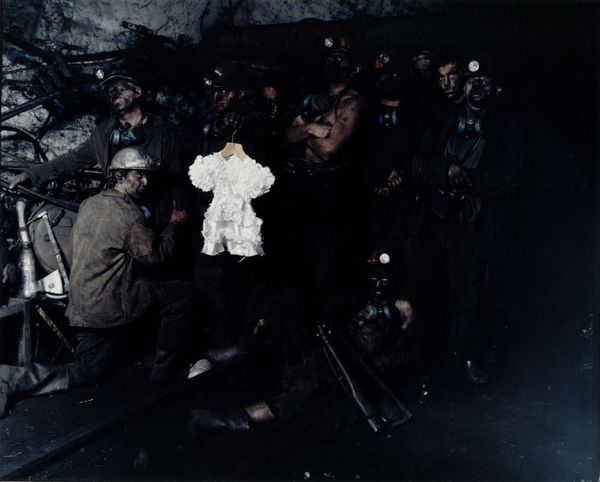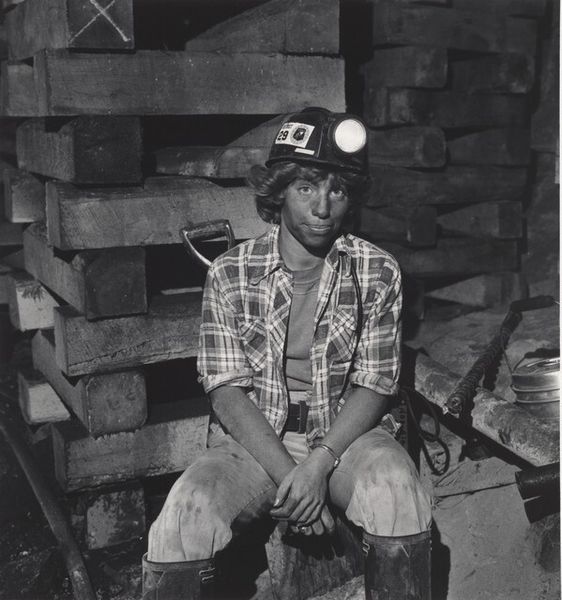
photography, gelatin-silver-print
#
portrait
#
contemporary
#
social-realism
#
photography
#
gelatin-silver-print
#
realism
Dimensions: image: 16.7 x 16.5 cm (6 9/16 x 6 1/2 in.) sheet: 25.2 x 20.3 cm (9 15/16 x 8 in.)
Copyright: National Gallery of Art: CC0 1.0
Editor: So this is Milton Rogovin’s "Appalachia" from his "Working People" series, taken in 1981. It's a gelatin silver print, and I find the contrast between the grit on the subject’s face and their warm smile really striking. What story do you think Rogovin is trying to tell? Curator: Rogovin's work functions as a potent commentary on class and labor. Think about the socio-political landscape of the late 20th century—Reaganomics, deindustrialization, and the decline of the American working class. This photograph captures the resilience and dignity of a coal miner in the face of those forces. Editor: The miner's expression does seem hopeful, almost defiant. Curator: Exactly. And consider Appalachia itself—a region historically exploited for its resources. Rogovin’s portrait disrupts the often-stereotypical representation of this community, offering a nuanced perspective that acknowledges both hardship and strength. How does this image challenge mainstream portrayals of labor, in your opinion? Editor: It humanizes the individual behind the labor, rather than just focusing on the work itself or the economic conditions. The setting feels almost secondary to the subject's presence. Curator: Precisely. Rogovin encourages us to consider the ethics of representation. He spotlights a life often rendered invisible, compelling viewers to confront their own positions in systems of power. The “Working People” series aimed to rewrite these narratives. What do you take away from this? Editor: I see how Rogovin's photograph is more than just a portrait; it’s a statement about social justice and a powerful form of visual activism. Curator: Absolutely. Art like this challenges us to think critically about whose stories are told and how they're told.
Comments
No comments
Be the first to comment and join the conversation on the ultimate creative platform.
